Colorado is one of a kind, filled with thousands of artificial and natural water bodies, including rivers, streams, and waterfalls. As such, picking the best lakes in Colorado could be confusing because everyone gets to choose based on their perspective. Colorado also creates opportunities for different water sports, from high alpine lakes requiring a hike through the backcountry to extensive reservoirs situated outside major cities like Denver. Jet skiing, boating, sailing, and fishing are revered in Colorado lakes and make good sports all year round. Apart from the above-mentioned, Colorado’s lakes also offer opportunities for campsites, hiking, sunbathing, picnic tables, and cabins.
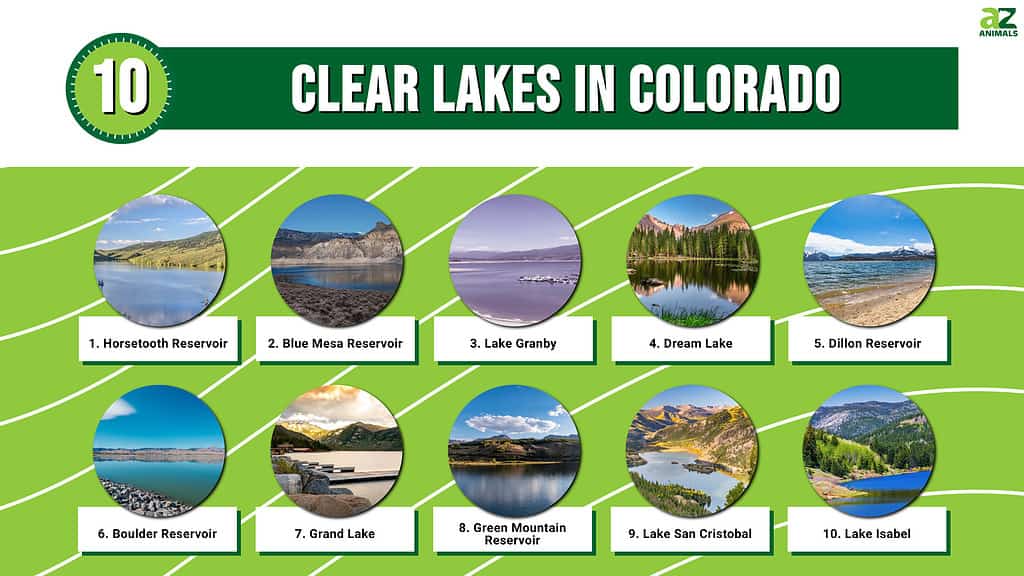
1. Horsetooth Reservoir

Horsetooth Reservoir is a large reservoir situated in the foothills west of the city of Fort Collins in southern Larimer County.
©iStock.com/marekuliasz
Horsetooth Reservoir, locally known as Horsetooth, is a large reservoir situated in the foothills west of the city of Fort Collins in southern Larimer County, Colorado. It runs approximately 6.5 miles (10 km) north-south with approximately one-half mile (1 km) of width. The reservoir’s main body lies between several homoclinal ridges, evident in its shape and orientation. A Dakota sandstone ridge runs along the east side, where dams plug gaps, while two ridges supported by erosion-resistant sandstone are on the west side.
2. Blue Mesa Reservoir
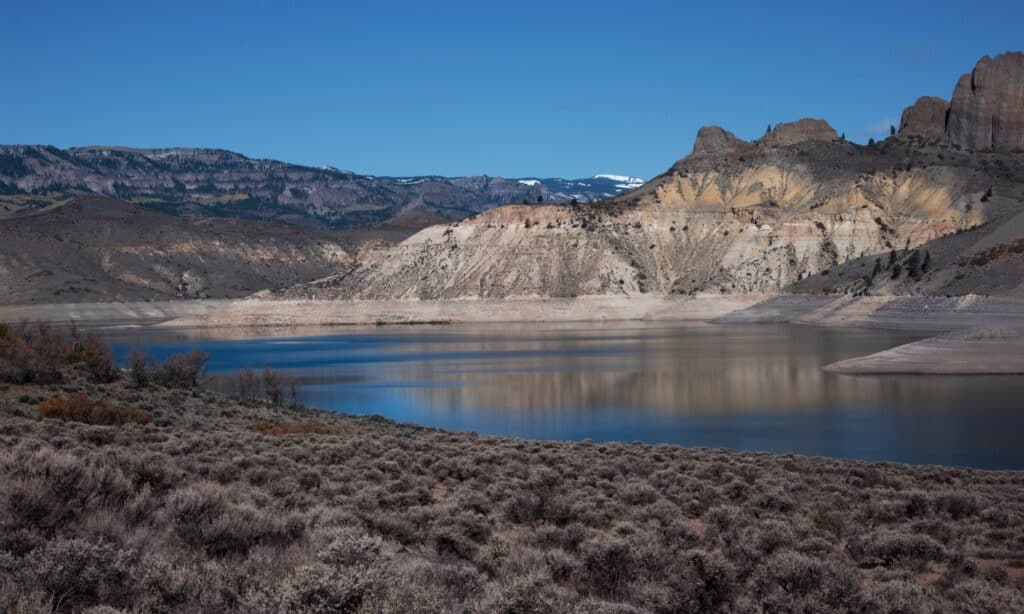
Blue Mesa Reservoir is situated on the upper reaches of the Gunnison River in Gunnison County.
©iStock.com/PK Visual Journeys
Although artificial, Blue Mesa Reservoir is the largest lake within the state and is situated on the upper reaches of the Gunnison River in Gunnison County, Colorado. It was created as a result of the Blue Mesa Dam construction, a 390-ft tall earthen fill dam constructed by the U.S. Bureau of Reclamation in 1966 purposefully to generate hydroelectric power. This lake has a maximum length of 20 miles (32 km), a total surface area of 9,180 acres (3,720 ha), a water volume of about 940,800 acre-feet (1,160.5 GL), and a surface elevation of 7,519 ft (2,292 m).
3. Lake Granby

Lake Granby was created by the construction of Granby Dam.
©iStock.com/tupungato
Boasting approximately 40 miles (64 km) of shoreline and the third-largest body of water in Colorado, Lake Granby was created by the construction of Granby Dam, completed in 1950. Lake Granby is famous with anglers because it continually gets stocked with rainbow trout and kokanee salmon. This lake is pumped via the Farr Pump plant using a pipeline that empties into a canal connected to Shadow Mountain Reservoir. Even though Northern Water operates the Farr Pump, the Bureau of Reclamation owns it. Lake Granby is home to the Lake Granby Yacht Club, one of the highest-elevation yacht clubs in the world at 8,280 ft (2,520 m).
4. Dream Lake
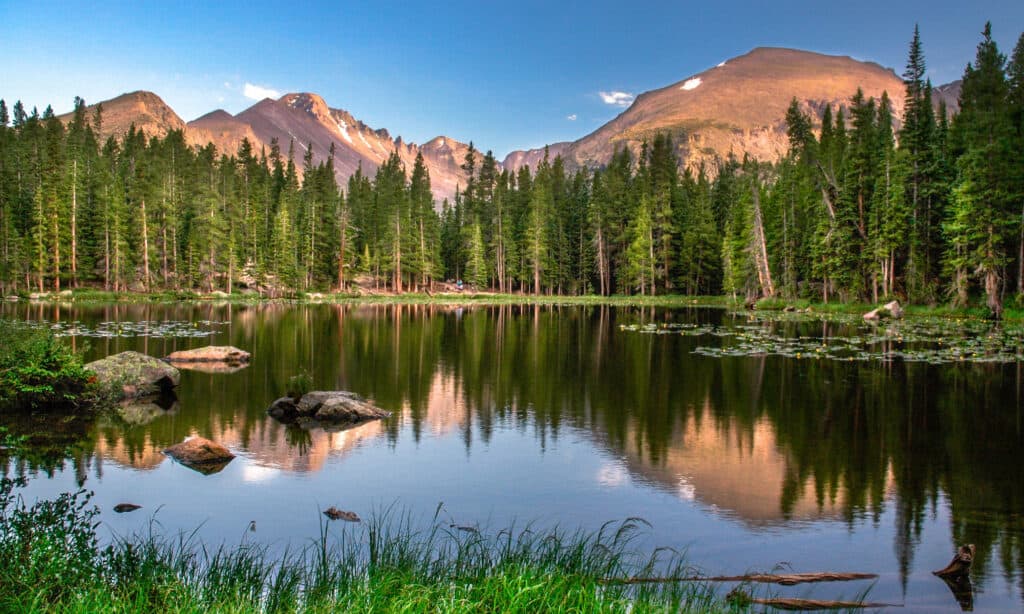
Dream Lake is a high alpine lake in Rocky Mountain National Park.
©iStock.com/Gerald Zaffuts
Located at the eastern continental divide, Dream Lake is a high alpine lake in Rocky Mountain National Park, northern Colorado. It is situated at Hallett Peak’s base, with the Bear Lake trailhead as its access point. This lake, as its name implies, could give you a good night’s sleep with the surrounding cliffs, providing stunning views. It is a good site and a popular destination for casual hiking.
5. Dillon Reservoir
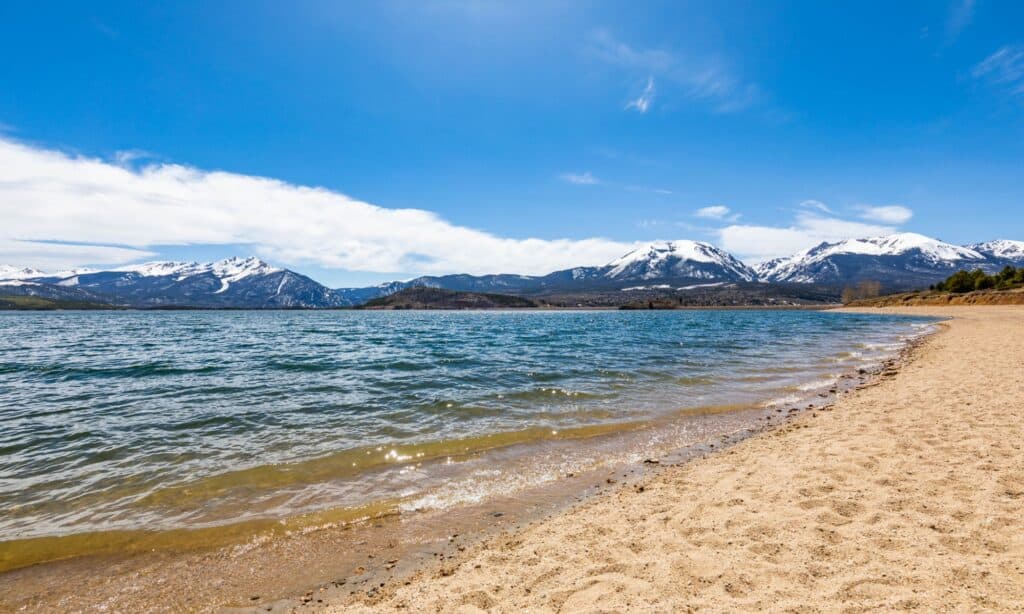
Dillon Reservoir is a large freshwater reservoir in Summit County.
©iStock.com/GummyBone
Dillon Reservoir, otherwise known as Lake Dillon, is a large freshwater reservoir in Summit County, Colorado, United States. Lake Dillion, controlled by Denver Water, is a reservoir for the city of Denver. The reservoir features different surrounding ski areas, including Keystone, Copper Mountain, Arapahoe Basin, and Breckenridge. During the ski season, many people flock to this reservoir area because it is situated close to four ski resorts. Keystone Ski Resort, for instance, is a large tourist destination just about five miles away from this. At the same time, the Arapahoe Basin is a medium-sized resort approximately ten miles away. Also, one of the largest ski resorts in Colorado (Breckenridge) is just about seven miles away, while Copper Mountain is situated eight miles away from Dillon Reservoir.
6. Boulder Reservoir
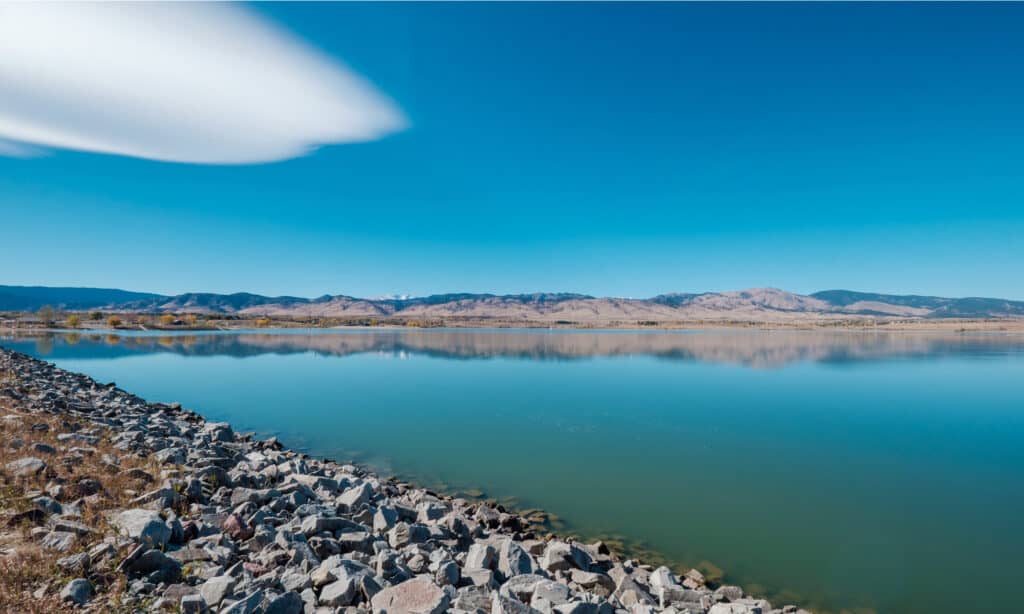
Boulder Reservoir stores water for the City of Boulder and the Northern Colorado Water Conservancy District.
©Wan Kum Seong/Shutterstock.com
Boulder Reservoir is situated in the northern part of Boulder. It stores water for the City of Boulder and the Northern Colorado Water Conservancy District. The reservoir gets most of its water from Colorado’s Western Slope through the Boulder Feeder Canal and the Alva B. Adams Tunnel. Its stored water is helpful in diverse ways, including for agricultural purposes in Weld county and also being used as part of Boulder’s municipal water supply. This 700-acre reservoir is a multi-purpose recreation and water-storage facility owned and managed by the City of Boulder. The Northern Colorado Water Conservancy District operates it as a water supply. Boulder Reservoir serves different purposes, including drinking water, irrigation, and recreation (swimming, sunbathing, boating, water skiing, fishing, picnicking, cycling, running, walking, and wildlife viewing).
7. Grand Lake
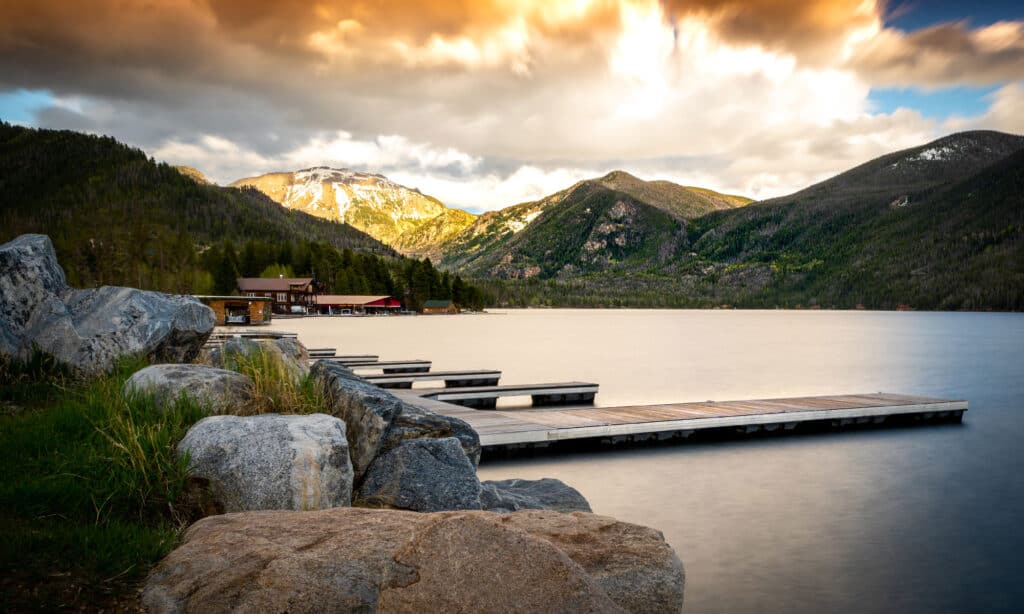
Grand Lake was formed during the Pinedale glaciation that occurred from 30000 BP (before present) to 10000 BP.
©Markel Echaburu Bilbao/Shutterstock.com
Located in the headwaters of the Colorado River in Grand County, this lake is Colorado’s largest and deepest natural lake. The town of Grand Lake is on its north shore. Grand Lake was formed during the Pinedale glaciation that occurred from 30000 BP (before present) to 10000 BP, which led to the glacial terminal moraine creating a natural dam. The North and East Inlets are the lake’s natural tributaries. They both flow out of Rocky Mountain National Park, which surrounds the lake on three sides. The lake is located about a mile from the park’s western entrance. Interestingly, there was a myth, or should we say, a superstitious belief, attached to this lake. Because the lake’s waters were always cold, the Ute Tribe believed it was a dwelling place for departed souls. Hence, they named it Spirit Lake.
8. Green Mountain Reservoir

Green Mountain Reservoir was built along the Blue River between 1938 and 1942.
©Kimberly Boyles/Shutterstock.com
The United States Bureau of Reclamation built this reservoir along the Blue River between 1938 and 1942 and situated it at the northern end of Summit County, Colorado. The reservoir and dam are used to store water for the benefit of Colorado’s Western Slope. Water is released from Green Mountain Dam either through the hydroelectric power plant at the dam’s base or over the spillway through the dam. The Green Mountain Power Plant generates up to 21,000 kilowatts using two generators. When combined with the other five federal power plants on the C-BT, they produce enough electricity to power almost 60,000 Americans annually.
9. Lake San Cristobal

Lake San Cristobal is a freshwater lake located in the San Juan Mountains.
©Paul Brady Photography/Shutterstock.com
Lake San Cristobal is a freshwater lake located in the San Juan Mountains at an elevation of 9,003 feet (2,744 m) in the U.S. state of Colorado. This lake is 2.1 miles (3.4 km) in length, about 89 ft (27m) in depth, has a surface area of 0.52 square miles (1.3 km2), and holds up to 11,000 acre-feet of water. The lake’s name is of Spanish origin, meaning “Saint Christopher.” This lake is situated near many old silver mines, so it is very clean, well kept, and stocked with rainbow trout.
10. Lake Isabel
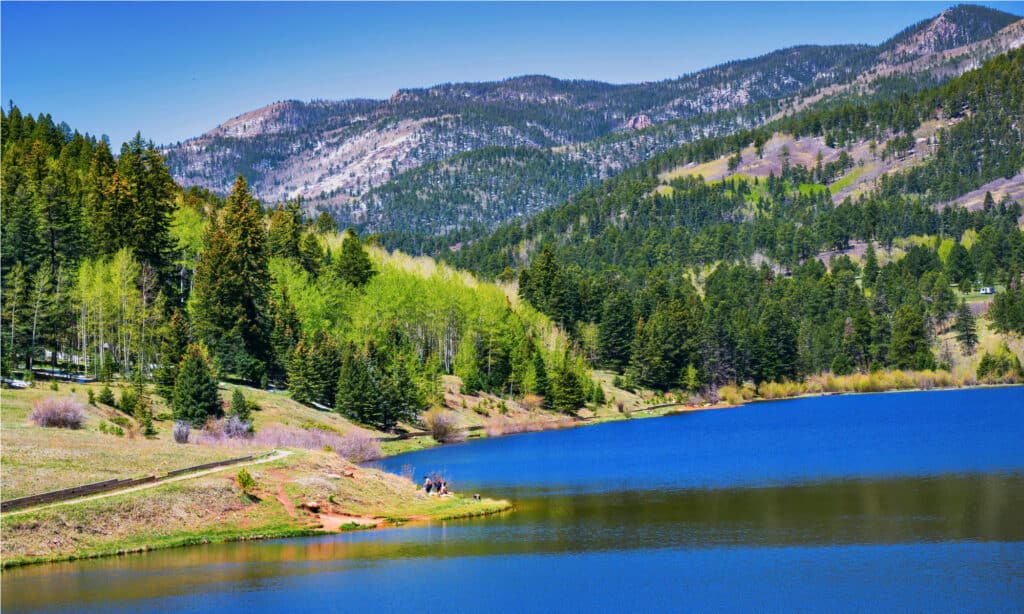
Lake Isabel is regularly stocked by Colorado Parks and Wildlife activities.
©Grossinger/Shutterstock.com
Lake Isabel is a reservoir that proudly showcases its beauty in the San Isabel National Forest in Pueblo and Custer counties. Located in the Wet Mountains, this lake is regularly stocked by Colorado Parks and Wildlife activities like camping, hiking, fishing, and sledding in the winter.
The San Isabel community lies on the lake’s north side in Custer County. Most of the dam is on the east side (Pueblo County), while most of the reservoir is on the west side (Custer County) because the border between Custer county and Pueblo runs north-south through the lake’s east side.
Summary of 10 Clear Lakes In Colorado
| Lake | Location | |
|---|---|---|
| 1 | Horsetooth Reservoir | Fort Collins in southern Larimer County |
| 2 | Blue Mesa Reservoir | the upper reaches of the Gunnison River in Gunnison County |
| 3 | Lake Granby | 5 miles outside of Granby |
| 4 | Dream Lake | Rocky Mountain National Park |
| 5 | Dillon Reservoir | Summit County |
| 6 | Boulder Reservoir | northern part of Boulder |
| 7 | Grand Lake | the headwaters of the Colorado River in Grand County |
| 8 | Green Mountain Reservoir | along the Blue River |
| 9 | Lake San Cristobal | San Juan Mountains |
| 10 | Lake Isabel | San Isabel National Forest |
The photo featured at the top of this post is © Kimberly Boyles/Shutterstock.com
Thank you for reading! Have some feedback for us? Contact the AZ Animals editorial team.






